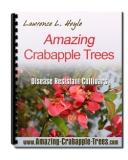Tips On How To Run A Worm Composter
Worm composting is beneficial for many reasons. It is a way of producing your own worms. As well, the process of worm composting is a wonderful tool for recycling organic waste. It is not difficult to build or to maintain a worm compost. Below are some tips on how to run a worm composter which you may find helpful.
To begin worm composting you will need to find a suitable area. This can be an area of ground, a plastic storage bin, a wooden box, or most any contained area. You may use plastic, metal, or wooden containers. Plastic is one of the lowest cost options. However, plastic does crack in time. As a result of this cracking it will need to be replaced periodically. Wood is another inexpensive worm housing. Just keep in mind that wood also decomposes with weather and moisture.
Ventilation is one of the most important factors to consider when choosing a container for your worm compost. Worms must have the proper airflow to thrive. If you choose a plastic or metal container you will need to drill several small holes in the top. This will provide for adequate ventilation. Many worm gardeners actually prefer the use of wood. Wood is naturally breathable. If you do opt for a wooden container make certain that the wood has not been chemically treated. Chemicals may be harmful to worm health. Natural is always the best choice.
Once you have chosen a container for your new compost you will need to prepare the environment. Use strips of shredded newspaper, and cardboard as worm bedding. You may also add cut grass, straw, and old hay. These materials will provide a source of nutritious fiber to worms. Throw a few handfuls of dirt on top of the paper and straw mixture. Next, you want to completely moisten the top of this compost. Do not soak with water. However, make certain that the entire area is moistened. Allow at least 24 hours for the water to soak through each layer.
Now you are ready to choose worms for the compost. There are several species to consider. However, two of the most popular choices are the Eisenia foetida (also known as Red Wigglers). Red Wigglers are approximately four inches long. They are red in color with a yellow tip. The other preferred choice is Eisenia hortensis, better known as the European Night Crawler. Night crawlers make wonderful fishing bate. These worms grow to be long and plump. They are perfect for attracting fish.
There are certain steps that you must take to maintain your worm compost. You will need to keep the compost moist and well fed. Each day lightly sprinkle the top of the worm bed with room temperature water. This helps to speed up composting. Worms thrive in damp, moist environments.
As for feeding, these creatures adore food scraps and garbage. Things such as vegetable peels, eggs shells, and most any food leftovers, will serve well. Something that many people fail to realize is that often feeding less produces more worms. If you over feed it can actually lower worm productions. So find a balance.
The key to producing an abundance of worms is maintaining proper bedding. You will need to add materials to the worm bed as they disappear. The newspaper and other materials used in building the bed will need to be replenished. Worms quickly use most resources in their path.
Just as bedding may become lowered it can build up. This is where harvesting can become so important. The waste from a worm bed yields a mineral rich material. This material is wonderful for flowers and plants. The substance serves as a beneficial organic fertilizer. Timing is essential in harvesting worm compost. The longer you leave compost, the richer it becomes. However, leaving compost too long may actually harm the worms. It is important to keep compost clean and renewed.
If you follow the steps above on how to run a worm composter you will find that it is very simple. The process can be fun and enjoyable. Worm composts are an environmental positive. They promote recycling and provide healthy, organic fertilizer for plants. Do not delay! Start your worm compost today.
Have A Great Story About This Topic?
Do you have a great story about this? Share it!
Order Your New Landscape Design Today!
Always Design Before You Plant!
Click The Above Link To Get Your Dream Design Started Now!

Privacy Disclaimer About Contact This Site Built: Solo Build It
Copyright © 2003 - 2023 by Web-Landscape-Design-Ideas.com.
All rights reserved.


